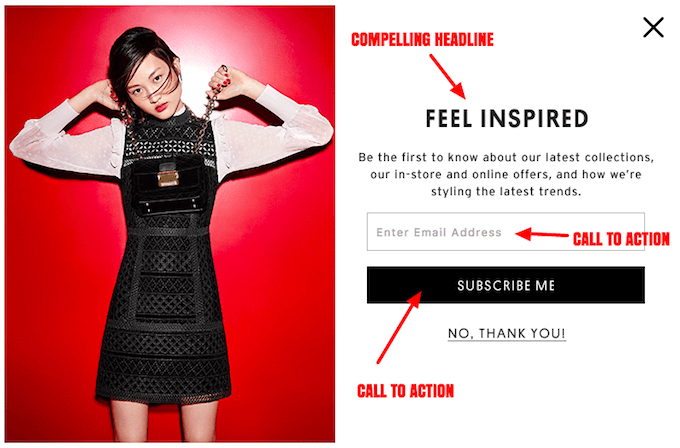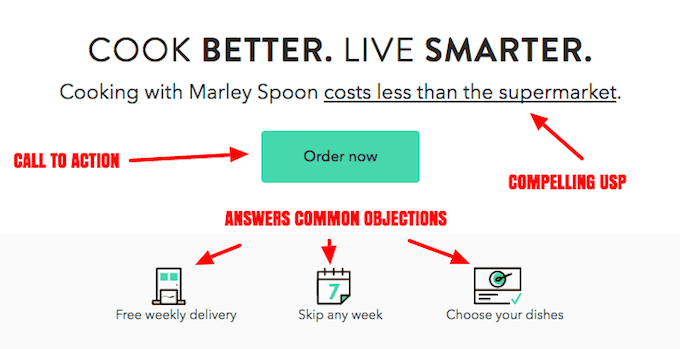The Devil is in the Detail: The Importance of MicroCopy
It is hard to express just how central User Experience (UX) is to the success of your business website. People expect so much more from websites and apps nowadays.
You are on the move, in a rush, and on your mobile. You want to access the information you need quickly and easily. This is where UX comes in.
A big part of improving UX is using the best words to communicate information.
When it comes to the copy on your website, you need to say the right thing in the right way at every opportunity. One of the most important types of writing for the web is Microcopy. This covers everything from a simple call to action to how you communicate to someone that they’ve entered the wrong password.

What Is Microcopy?
Microcopy refers to those short sentences, phrases and single words that communicate with your audience and help them interact with your website. These snippets of text can be used to explain features, interfaces, or provide a relevant prompt.
By improving these short instructions and messages throughout your website, you can let a user know what they need to do next in a way that is both helpful and reassuring. The goal of microcopy is to improve UX, giving your audience the information they need and guiding them towards a decision and an action.
The importance of microcopy should not be underestimated. It helps audiences understand and feel comfortable on your website. This in turn encourages them to complete the desired action.
Microcopy should be used widely on your website. The most obvious examples are in the following scenarios:
- Call to Action Buttons (Buy Now! / Email us / Add to Cart etc.)
- When Creating Accounts
- Email Sign-Ups
- Forms – Checkout Form; Data Capture forms
- Warning and/or error messages
- Login / Sign-In Pages
- Loading screens
- Free trials
- Downloads
- Search Bars
- Spam Captchas
- Promotional banners
- Social Media
- Confirmations / Thank you emails.
Microcopy should also be used to address and even mitigate concerns within your audience such as why you are asking for certain information or what happens with this information once they have provided it. A few carefully selected words can instantly remove an objection your audience may have. For example, a “never shared, never spammed” prompt in an email form answers concerns around what happens to a user’s email address.
Microcopy is also a way to communicate your brand personality. A varying degree of humour is often apparent in most microcopy. These short informal snippets when used correctly can really packing a punch when it comes to branding.

Rules When Writing Microcopy
Microcopy has to…
- be in keeping with your brand – match the ‘tone of voice’ of your company
- make the web experience more enjoyable for the user – this mainly requires it being helpful
Both of these points require you to have a deep understanding of your audience.
Understanding Your Audience
To write effective microcopy, you need to understand your audience and their needs. By developing your knowledge of a target user, you are able to select the most effective calls to action and use the language that will work best.
If you have Google Analytics installed on your site, you already have data that you can analyse around conversion rates on each page of your website. You can also get your web developers or digital marketing team to implement goals around certain actions on a page. Remember you can also ask your web users questions and get their input into your website.

Brand Messaging and Tone of Voice
How Microcopy Reflects Your Brand Messaging
When writing microcopy for your business website, you need to be able to tell your brand’s story in fewer words than ever before. In order to do this, you need to know inside and out your audience, your tone of voice and brand values.
When you write with this knowledge, you can make users understand and connect with your business.
With brand messaging, you need to be precise and consistent. You not only have to describe your offering in a single sentence, but you need to do so in a way that speaks to your target audience. Every word counts.
Tone of Voice
With an understanding of your target audience and your own business values, you should have a tone of voice that reflects this. Settling on a tone of voice that suits your brand is not an easy task but once you have it, you can then carry this through into your microcopy. What types of words do you use? Are you serious? Irreverent? How formal are you? How quirky?
It is important that all of your website copy, including microcopy, is written in the same tone of voice and style. Users are happier when they get what they expect and in a written language that they find familiar. Consistency is a key factor in establishing an online personality and improving UX.
In some instances it makes sense to employ a lighter, less formal tone in microcopy to create a friendlier more conversational experience. There are times when this isn’t appropriate.
USPs and Brand Values
You should be familiar with the values that guide all aspects of your business. These should be three or four statements that summarise your approach and permeate your business at every level.
To compliment these brand values, you should also be aware of your USPs. What makes you stand out from your competitors? Being very familiar with both your brand values and USPs can help guide your microcopy.
Write for your audience
Microcopy has to speak directly to your audience. If you can demonstrate a deeper understanding of your audience then your microcopy is all the more likely to achieve its desired result. So, what do you know about your target audience?
Who are they? What information do they need? What language are they comfortable with? What are their expectations? The answers to all of these questions may change depending on the page of your website they are on and what stage of their journey they are at.
You may want to consider different types of user and how they might respond to your microcopy. Imagine a new user coming to your site for the first time compared to a regular user that visits you everyday. You may also want to think about different levels of familiarity with the web. How familiar are your users with actions and results? It may be that more exposition is requited depending on your audience.
Now ask yourself does my microcopy make sense for all of these different users?
Writing Microcopy
In order to write microcopy, you need to know your objective and the context. Once you have these locked in, you can start writing.
Objective
You should be 100% clear on what you want to achieve with each piece of microcopy. With an objective in mind, you can then work on using the words and phrases to achieve it. It may be that you need to communicate urgency or the benefits of a certain action or answer a barrier to them taking an action.
Clarity is essential. You need to avoid any confusion. There should be no room for misunderstanding in your microcopy.
Context
Microcopy is all about context. You need to provide the right information at the right time to your user. This means you should carefully consider the location, design and formatting of the microcopy as well as the words and phrases. It’s worth pointing out that you don’t always need microcopy, just when it becomes necessary to help a user. For example, when they have answered a wrong password and want to know what to do next. These microcopy messages need to be clear, concise and helpful.
When do your users need that question answered? When do they need more information?
Stay in the mindset of a new user and think of what message would be the most useful in certain contexts.
UX Planet’s article on UX Impact of Microcopy has lots of good examples of highly contextual microcopy.

Edit, Edit, Distill, Edit, Test
It is all too easy with microcopy to write a few words and think ‘well, that’s done!’ In reality, you need to revisit your copy several times and test it in different contexts and from multiple angles before it is ready.
Look at what you have written and imagine how different users might respond to it. Unless it is perfectly clear in all scenarios, you need to go back to the drawing board. And remember George Orwell who wrote: ‘If it is possible to cut a word out, always cut it out.’ Boil down and distill what you have written it. Interrogate it and then rewrite until you are sure that your user knows what to do next and that the objective is met.
If a page on your website is failing to convert, look at the calls to action on the page and the surrounding microcopy. Could there be elements that are being misinterpreted? Start the process of interrogating, editing, distilling all over again.
Split Testing
The great thing about writing for the web is that you can use data to see if your amends works. As with any form of UX changes to your website, it makes sense to test the impact. When you have a call to action within your microcopy, you can carry out split testing to see which gets more hits or conversions.
Microcopy Writing Tips
- Be direct – your microcopy should be straightforward and to the point
- Be precise – your language and syntax should be precise
- Use simple language – don’t use jargon, scientific words, unusual words or those that could be misunderstood
- Use the smallest number of words that guarantee the meaning is clear – too much information can lead to misinterpretation
- Consider writing microcopy in pairs around a single call to action
- Be conversational – address the user like you are having a conversation with them
- Interact with a website that behaves similarly to your own – look at what they do right and what they do wrong
- If you have multiple people working on microcopy on your site, it makes sense to produce a style guide to ensure consistency
Writing Calls to Actions
You need calls to action throughout your website to engage your target audience. It’s not just enough to have calls to action but they also need to be effective and this means paying attention to microcopy.
Neil Patel identifies eight calls to action techniques in his post on creating the perfect call to action. In summary, they are as follows:
- Benefit – how will your audience benefit? what value are you offering? e.g. get access to…
- Instant gratification – free money off voucher; download e.g. use ‘Instantly’
- Curiousity – don’t reveal all information e.g. use questions that they want answers to
- Identify a problem, aggravate the problem, offer the solution – e.g. Losing website traffic? Need those sales. Here are 3 ways to increase traffic.
- Leverage the urge to belong – everyone wants to belong to a group e.g. Become a member today and join 120,000 subscribers.
- Use a strategic cliffhanger / clickbait – e.g. You won’t believe how I grew my Twitter followers by 800%
- Offer a bonus – e.g. Get 10% of your first order.
Button Microcopy
One of the most common uses of microcopy is on the call to action buttons on your website. These are vastly important to get right as they describe the action your target user will take when they click. This could be ‘Buy Now’, ‘Sign Up’, ‘Start Free Trial’, ‘Subscribe’ or ‘Order Now’ (like in the below Marley Spoon example).
Addressing Concerns
Before your users take any form of action, they will almost definitely have doubts that need answering. It is your job to answer these in the right way at the right time. You can do this through microcopy.
Before someone completes an action on your website, there will be specific barriers that will need to be overcome. Whether it is a newsletter signup, a download or a free trial form, there will be potential problems that need solutions.
Write down a list of potential obstacles for each call to action on your site. If you can’t think of any, then ask your potential customers what their concerns are. For example, your website asks for a phone number as part of the checkout process. Some people will rightly want to know why you need their phone number. You should answer this in a piece of microcopy. Something like: ‘We will only contact you if there is an issue with your order. Never for any other purpose.’
With newsletter sign-ups, people are often concerned about receiving too many emails. You may want to stress in the microcopy around the sign-up that you only email once a week and it is super easy to unsubscribe.
By addressing the user’s fears head on and in an effective manner, you reduce their concerns, mitigate potential problems and remove obstacles to them completing the desired action.

Loom – Understanding how to write for the web
At Loom, we write for the web all day every day. We know how microcopy can improve your website’s conversion rate and create happier users. To find out more about our unique bespoke approach to digital marketing call us today on 0117 923 2021 or email on [email protected].





